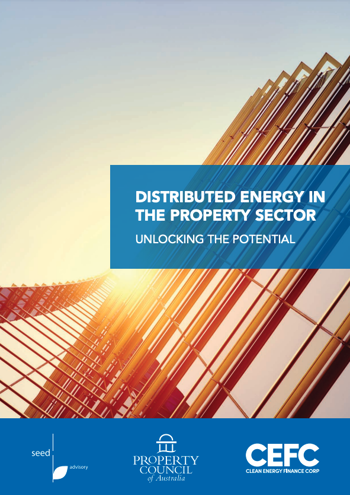
Insights
Distributed energy in the property sector: Unlocking the potential
Identifying barriers to distributed energy in property, and solutions to overcome them
This report finds that the property industry can play a significant role in modernising Australia’s traditional, centralised electricity system. It underscores the need for energy market authorities, electricity networks and the property industry to improve information sharing, align planning processes and work on collaborative solutions.
About this report
Distributed energy in the property sector: Unlocking the potential
June 2019
Distributed energy in the property sector: Unlocking the potential was developed by the CEFC and Property Council of Australia, together with Seed Advisory.
Read moreThere is a huge opportunity for Australia’s property industry to transform from a passive participant in the energy market to an active electricity producer and energy market participant. In particular, the rooftops of commercial buildings offer large, and generally untapped, opportunities to generate renewable energy.
about the industry
Clean energy market drivers
- The property sector is ideally placed to play a significant role in modernising Australia’s traditional, centralised electricity system by increasing its production of renewable energy and facilitating the integration of more renewable energy into the electricity mix.
- While there has been significant growth in residential rooftop solar, the commercial and industrial property sectors have only just begun to realise the opportunities for lower electricity costs and reduced emissions presented by solar and battery storage.
- With a greater proportion of electricity transmitted over shorter distances, a distributed energy model has the potential to improve network efficiency, reduce losses, minimise network capital expenditure, provide demand response services and increase the provision of system security services.
report findings
Measures to enhance distributed generation
The report found that the electricity industry could maximise the contribution of distributed generation in lowering emissions by alleviating key barriers, including:
- Unnecessary costs, delays and uncertainty in current grid connection processes
- Limited routes to market
- Regulatory models that do not necessarily reward distributed energy producers
- Poorly aligned network and property sector planning processes
- Costs incurred due to regulatory requirements on embedded networks
- Impediments to non-network participants providing electricity network services
- Commercial arrangements such as net leases and the ‘split incentive’ problem.
Read the first report in this series - Distributed energy in the property sector: Today’s opportunities





